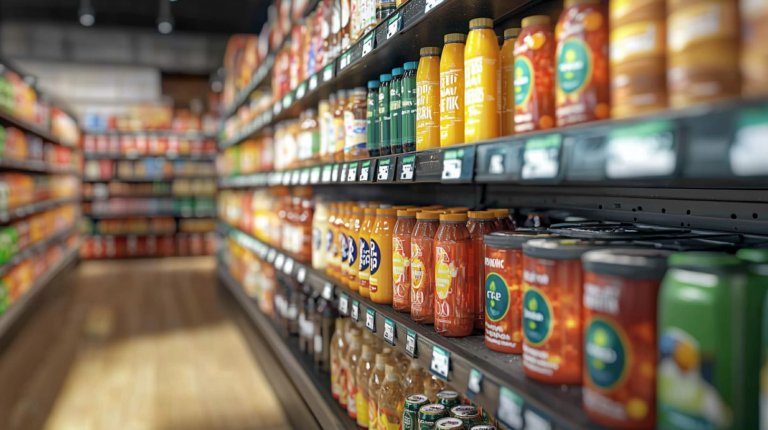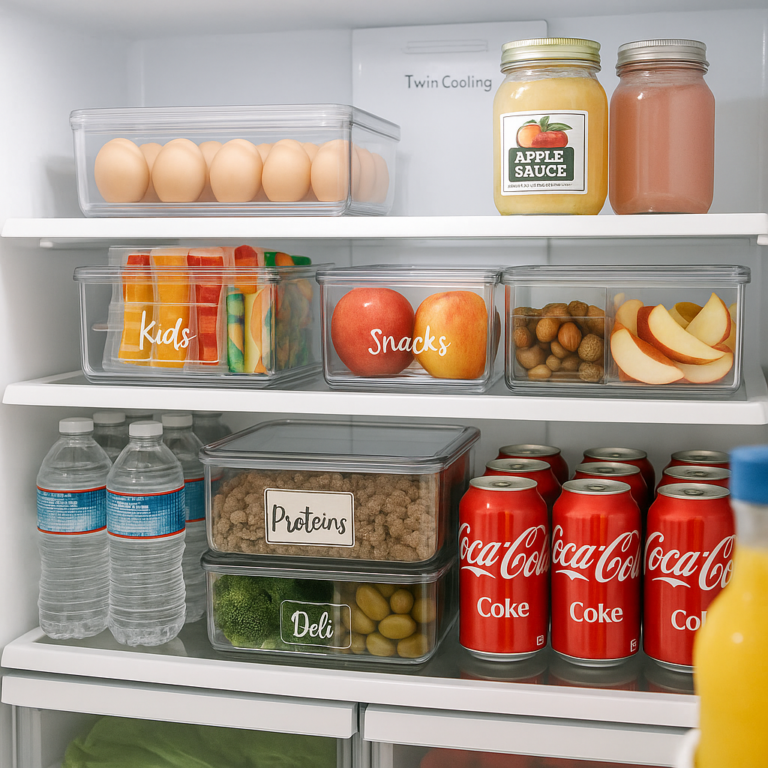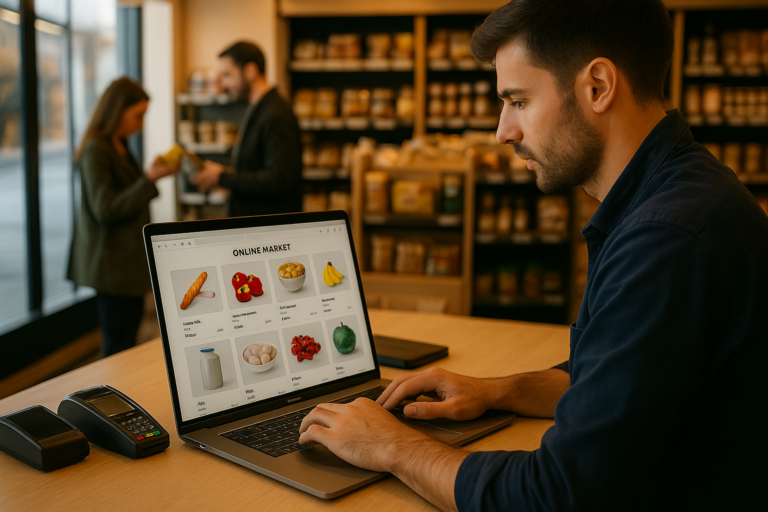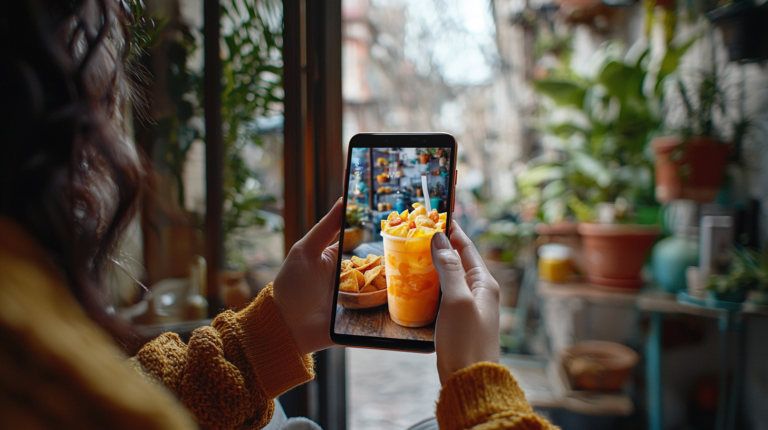A guide to retail media networks

- 1.
- 2. What are retail media networks?
- 3. How do retail media networks work?
- 4. The Role of AI and Automation in Retail Media Networks
- 5. How do retail media networks benefit the retailer?
- 6. How do retail media networks benefit brands?
- 7. Do retail media networks benefit consumers?
- 8. How Can a Business Start Its Own Retail Media Network?
- 9. How much does it cost to advertise on retail media networks?
- 10. Which Industries Can Benefit Most from Retail Media Networks?
- 11. Stay on the cutting edge of your digital marketing strategies with Power Digital
A Guide to Retail Media Networks
Retail media networks are resurging in popularity amidst a growing intolerance of irrelevant advertisements, a spike in online shopping that occurred during the pandemic and the progressive decline of cookies.1
The numbers are there to prove it: eMarketer predicts that ad sales on retail media networks will surpass the $52 billion mark in 2023.2 GroupM projects that digital advertising on retail media networks will climb by roughly 60% in the next four years, surpassing the growth of all other forms of online advertising.3
Businesses searching for fresh retail marketing strategies to add to their advertising playbook may benefit from investing their dollars in retail media networks or building one themselves. But what are these benefits? How do retail media networks operate? And can any site become a retail media network? Let’s probe these questions together.
What are retail media networks?
Retail Media Networks (or Retailer Media Networks, or RMNs) are essentially digital aisle, point-of-sale and shelf space.
Imagine walking into Barnes & Noble and finding an entire table dedicated to a debut novel published by Simon & Schuster—space that has been purchased (or, rather, rented) by the publisher to attract browsers’ attention and increase book sales.
Or picture turning the aisle at Whole Foods and finding a display for the hot new Mary’s Gone Crackers flavors, conveniently located next to the self-checkout and on sale for Amazon Prime members.
Digital retail media networks mirror these scenarios online. When a consumer is browsing blow dryers on Amazon, retail media ads for Dyson’s Supersonic Hair Dryer appear as they browse—with Amazon as the RMN (short for retail media network) and Dyson as the brand. Simply put, it’s like advertising in print, television or a brick-and-mortar store but in a digital format and near the point of sale.
Amazon kicked off this concept in 2012, and, unsurprisingly, governed the space for years. Now, though, it’s not the only RMN pulling in ad sales dough and helping businesses expand brand awareness and boost sales.
Today’s leading RMNs
Consumers encounter retail media networks more frequently than they may realize—every time they visit the Target website or app, for example, and add Mott’s applesauce to their cart upon seeing an ad for it.
In addition to Target and Amazon, the top RMNs include:3,4
- Walmart
- Instacart
- Ulta Beauty
- Dollar General
- eBay
- Petco
- The Home Depot
- Marriott
- Best Buy
- Albertson’s
- Macy’s
- Kroger
- Nordstrom’s
- Lowe’s
- Dick’s Sporting Goods
Each of these retailers is seeing the fruits of their digital labor (and maximizing their popularity). In 2021 alone, Walmart’s RMN brought in $2.1 billion in ad sales, while Forrester asserts that 25% of retailers with an RMN are earning $100-plus-million in ad revenue annually.
How do retail media networks work?
As mentioned above, retail media networks work much in the same way that brick-and-mortar stores do. Brands like Mott’s, Dyson and Mary’s pay the retailer for in-store advertising. In the digital realm, brands pay retailers like Target to feature their ads on their channels (their website, their app, their social media and other online platforms).5
This translates to digital advertising on several of the RMN’s pages, such as their:
- Homepage
- Product detail pages
- Category pages
- Search pages
Advertisers are also given access to a customer’s first-party data through the retail media network. This enables companies to “catch” consumers when they’re primed to make a purchase—helping them resonate thoroughly with ready-to-purchase consumers, instead of bombarding them with irrelevant ads while they try to check the weather.
The Role of AI and Automation in Retail Media Networks
AI and automation are revolutionizing how RMNs operate, helping brands and retailers optimize performance with:
- Dynamic Ad Placement: AI determines where to place ads based on real-time user behavior, ensuring ads reach the right audience at the right moment.
- Predictive Analytics: Machine learning analyzes past purchase data to forecast which products a customer is likely to buy next.
- Automated Bidding: AI-powered bidding tools adjust ad spend dynamically to maximize ROI based on performance trends.
- Personalized Product Recommendations: AI curates tailored product suggestions based on shopper interests, increasing ad relevance.
As AI advances, brands leveraging these technologies will gain a competitive edge in retail media advertising.
How do retail media networks benefit the retailer?
For the retailers that host the retail media networks themselves, the key benefit boils down to revenue.
By opening up space on their digital platforms for retail media ads they can sell, titans like Nordstrom or The Home Depot effectively create another stream of revenue. For big-box retailer websites like Walmart and Target, this helps them to keep their prices low and continue churning sales.
How do retail media networks benefit brands?
A primary enticement of RMNs is the reciprocal relationship of benefits. Both the retailing brand and the advertising brand benefit. The retailer gains a steady flow of passive income through retail media advertising; the advertiser gains brand visibility, more sales and first-party data.
Let’s take a closer look at these benefits:
- Targeted messaging – It’s hardly news that consumers want to be seen and understood, and are apt to ignore ads that have zero relevance to them. The fact that marketers are granted access to first-party customer data enables them to serve ads that are relevant to their interests—up to the very minute of the user’s browsing.
- Timing – For consumers, there are few things more exasperating than being hit with advertisements when they’re conducting other business (or no business at all) online. Working with RMNs ensures that marketers reach consumers when they’re already in the mood and mindset to shop. Naturally, this increases the possibility of a conversion.
- A viable substitute for cookies – Cookies are going the way of dial-up modems as networks crack down on data privacy restrictions to keep users’ information private. That means brands must make efforts to obtain their own, compliant first-party data to understand consumer behavior—and an RMN is an opportunity to do so.
- – Increased visibility – Advertising on large retailer websites bolsters a brand’s chance of getting noticed and making an impression. The timing of these ads—during the buyer’s purchasing journey—also helps to ensure that the brand remains at the forefront of the consumer’s mind as they drop products into their online cart.For businesses looking to maximize their retail media network strategies, partnering with best Amazon advertising agencies can provide the expertise needed to optimize campaigns, leverage first-party data effectively, and drive higher returns. These agencies specialize in fine-tuning ad placements and messaging to ensure your brand stands out in a competitive marketplace.
Do retail media networks benefit consumers?
If you’re not fully sold on the benefits of retail media advertising, it can also serve consumers in a few surprisingly positive ways.
For example, consumers may be torn between nutritional supplements when browsing the digital shelves on CVS when an ad emerges promoting a sale. In many ways, ads on RMNs can help consumers get acquainted with companies they might not find at their local brick-and-mortar—while scoring a better deal in the process.
RMNs also help keep product prices at a reasonably low cost as retailers who bring in revenue through ad sales aren’t forced to hike up prices.
Further, when brands make proactive use of first-party customer data like user behavior and purchasing patterns from RMNs, they can deliver more value to the consumer. This creates a marketplace of products and services that resonate with consumers most.
What are the drawbacks of RMNs?
As most brands and marketers know, no retail strategy is free of flaws. It’s important to be aware of the obstacles in the realm of retail media networks today, including:
- A saturated marketplace – Choice is a fabulous thing but it can also be overwhelming when there’s a glut of options. A survey conducted by Forrester found that 45% of advertisers claim that there are “too many RMNs to manage.” In addition, marketers have trouble comparing results and performance across RMNs, which challenges their certainty of where they should focus their advertising on RMN energy.3
- An uneven playing field – Brands that don’t have the capital, budget, infrastructure, expertise, traffic and sway of bigger brands may be at a disadvantage in the RMN game. Smaller brands end up needing to work harder to boost visibility and gain traction alongside brands that are more recognizable in a space where purchase decisions are made almost instantly.
How Can a Business Start Its Own Retail Media Network?
Many businesses are now considering launching their own RMNs instead of just advertising on existing ones. To create a successful retail media network, brands should:
- Assess their audience and traffic – A business must have substantial website traffic and engaged users to attract advertisers. Retailers with strong customer loyalty programs and frequent online shoppers have a natural advantage.
- Develop an ad inventory – Businesses need to define the types of ad placements they will offer, such as banner ads, sponsored product listings, or custom brand pages.
- Leverage first-party data – The ability to offer advertisers valuable audience insights and precise targeting is a key advantage of RMNs.
- Choose the right technology – Businesses need ad-serving technology that integrates seamlessly with their e-commerce platform and can provide real-time analytics.
- Set clear pricing and ROI expectations – A transparent pricing model and performance tracking ensure advertisers see value, leading to long-term partnerships.
How much does it cost to advertise on retail media networks?
Forbes compares advertising on RMNs to advertising on television, with the approximate CPM landing between $20 to $50.3
However, the cost will ultimately depend on the individual retail media network in question. Creating retail partnerships with an RMN like Amazon may cost a brand on the lower end of the scale, while advertising on a lesser-known retailing platform may land on the high side. With that being said, even if you think your brand can compete on a larger retail website like Amazon, you still can greatly benefit from working with an Amazon agency.
Which Industries Can Benefit Most from Retail Media Networks?
While RMNs are commonly associated with big-box retailers, a variety of industries can leverage them for growth, including:
- Consumer Packaged Goods (CPG): Brands selling everyday products like snacks, beverages, and personal care items benefit from RMNs by gaining premium digital shelf space.
- Electronics: Tech brands can use RMNs on platforms like Best Buy and Amazon to highlight product features and drive conversions.
- Grocery & Food Delivery: Supermarkets like Kroger and Instacart enable brands to advertise at the digital checkout for impulse purchases.
- Beauty & Personal Care: With RMNs on platforms like Ulta Beauty and Sephora, brands can target high-intent beauty shoppers.
- Travel & Hospitality: Hotel chains like Marriott and airlines use RMNs to promote exclusive packages and upsell services.
Businesses in these industries can use RMNs to drive direct sales while gathering valuable consumer insights.
Stay on the cutting edge of your digital marketing strategies with Power Digital
Retail media networks aren’t a new strategy in the marketing world, but they are growing swiftly as brands search for ways to engage with the 2.64 billion online shoppers around the world.6
Brands that want to increase their awareness in front of ready-to-buy consumers while collecting valuable first-party data are turning on the pipeline to RMN strategy.
To ensure your brand optimizes its potential revenue in the vast retail media network space, rely on our digital marketing firm. We take an analytics-first approach with nova and other industry-leading tools to examine and determine where your ad dollars will be best spent and where you can make the most meaningful—and profitable—connections with your audience.
Keep ahead of the curve with Power Digital and book a consultation with us today.
Sources:
- Neil Patel. What is a retail media network? https://neilpatel.com/blog/retail-media-network/
- Insider Intelligence. US digital retail media ad spending, 2019-2023. https://www.insiderintelligence.com/chart/251606/us-digital-retail-media-ad-spending-2019-2023-billions-change-of-digital-ad-spending
- Forbes. Retail media networks are the next big advertising channel. https://www.forbes.com/sites/bradadgate/2022/12/01/retail-media-networks-are-the-next-big-advertising-channel/
- V12. What is a retail media network? https://v12data.com/blog/retail-media-network/
- Amazon Ads. What is a retail media network and why is it important? https://advertising.amazon.com/blog/retail-media-networks
- Oberlo. How many people shop online? https://www.oberlo.com/statistics/how-many-people-shop-online
Our Editorial Standards
Reviewed for Accuracy
Every piece is fact-checked for precision.
Up-to-Date Research
We reflect the latest trends and insights.
Credible References
Backed by trusted industry sources.
Actionable & Insight-Driven
Strategic takeaways for real results.


















